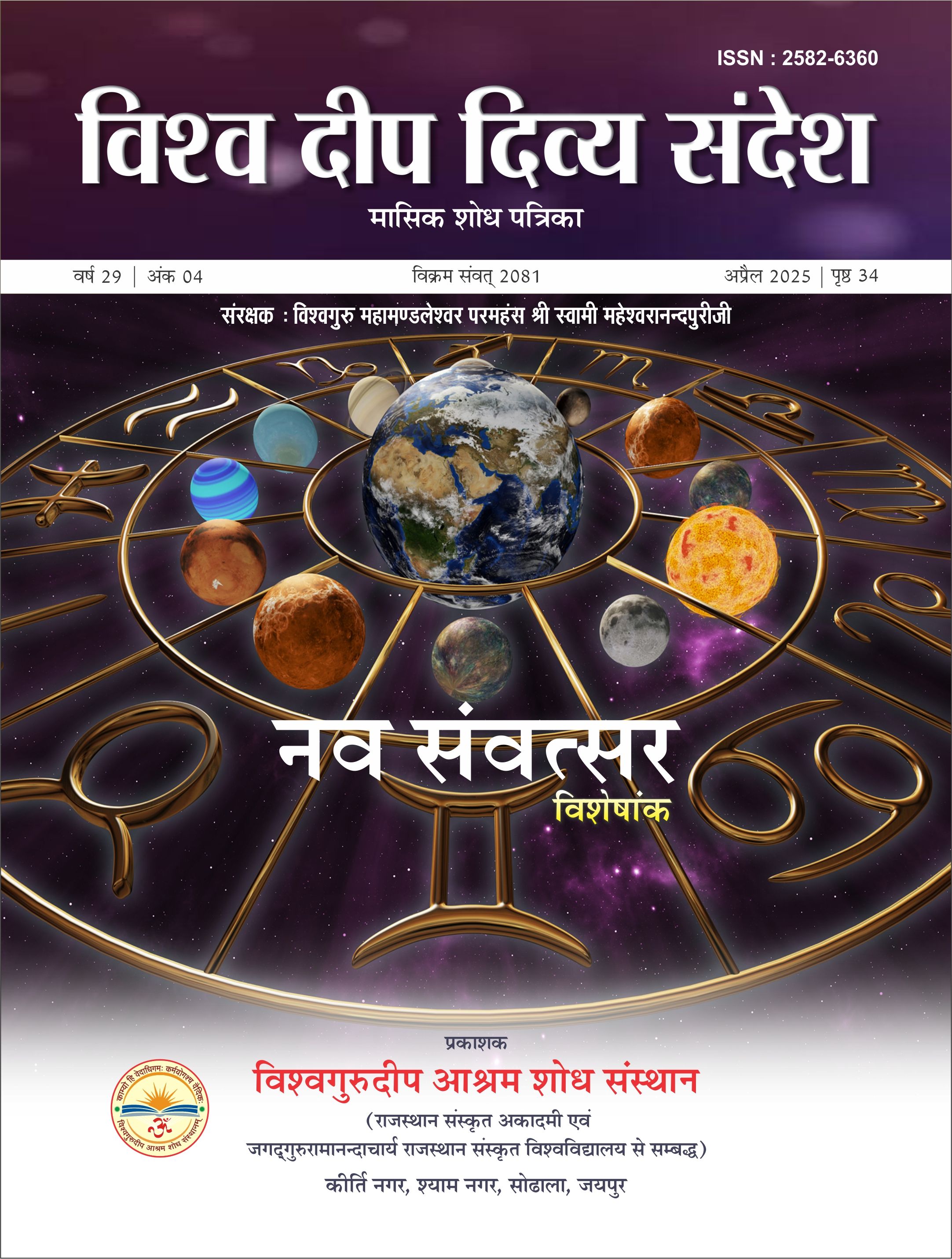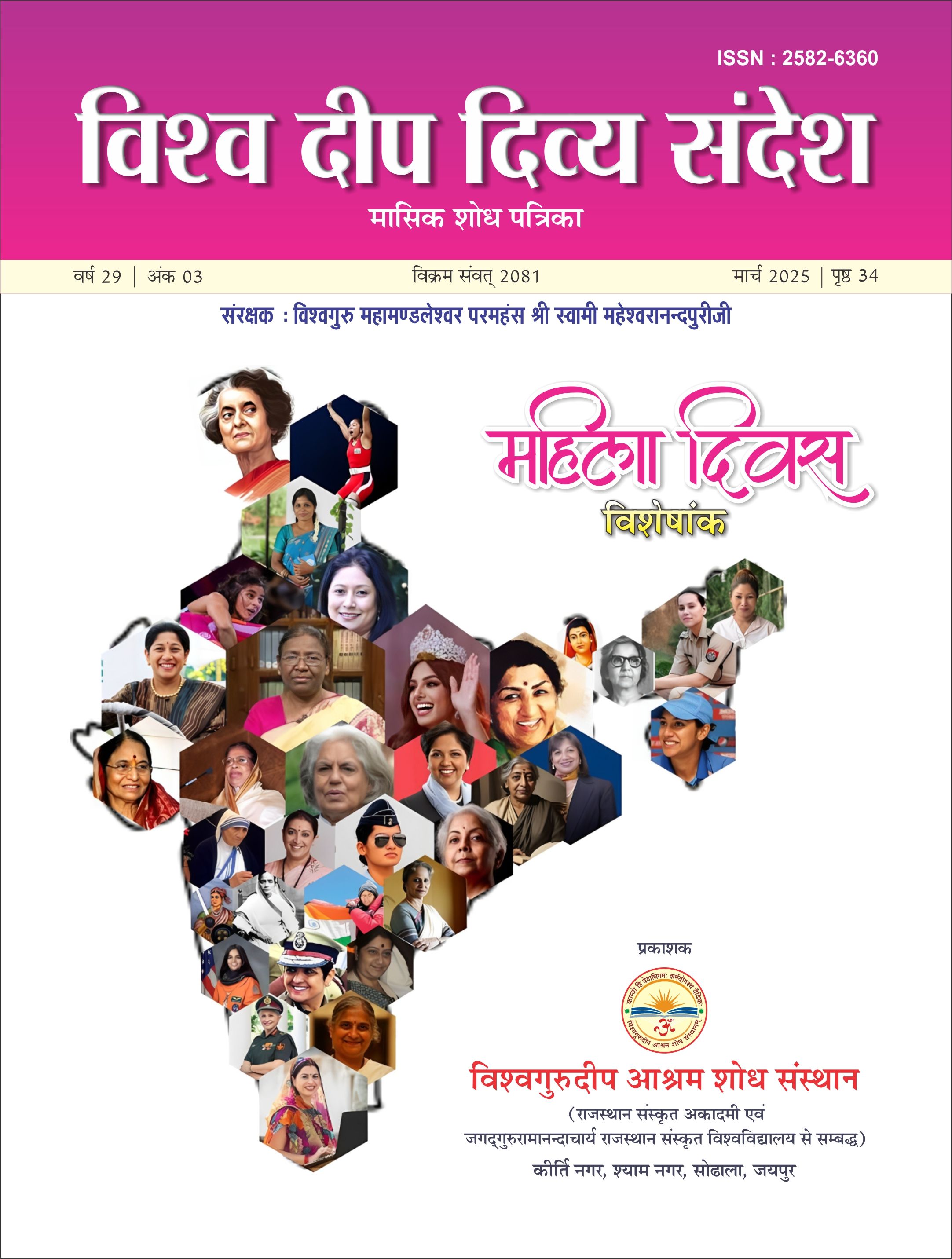- Home
- Activities
- Gopath Brahmana of Atharva Veda - Prof Kailash Chaturvedi
Gopath Brahmana of Atharva Veda - Prof Kailash Chaturvedi
The Dialogue on Vedic Science (18) - Atharvavedic Gopatha Brahmana
Professor Kailash Chaturvedi
Vedic Science Dialogue (18) - Atharvavedic Gopatha Brahmana:
Dear Friends,
In our previous seventeen concise dialogues of this Vedic Science series, we have discussed the nature of the infinite Supreme Being, the wondrous five-fold creation crafted by Him, various seers of creation - sages, ancestors, gods, humans, and nature, and their bindings in the Rigveda, Yajurveda, Samaveda, and Atharvaveda, along with the interpretative Brahmana texts of the first three Vedas. Presenting today, as the eighteenth and final part of the series, a brief introduction to the Atharvavedic Gopatha Brahmana.
It is an astonishing research finding that while there are nine branches of the Atharvaveda, there exists only one interpretative Brahmana text - the Gopatha Brahmana. In reality, only two branches of the Atharvaveda - Shaunaka and Paippalada - are prevalent and available. Despite extensive exploration over a long period, there is no mention of any other Atharvavedic Brahmana text apart from the Gopatha Brahmana. Patanjali's grammatical Mahabhashya and Venkatamadhava's Rigvedanukramani acknowledge Gopatha as the sole interpretative Brahmana for both the Shaunaka and Paippalada branches.
There are also some interesting facts behind the name 'Gopatha Brahmana': Firstly, it is named after its expounder, Rishi Gopatha. Secondly, based on the root 'grp,' it is named 'Gopatha' because 'Atharvangirasau hi Goptar.' Thirdly, a substantial portion of its material is taken from the 'Shatapatha Brahmana,' and following its style, it is called 'Gopatha Brahmana.'
Turning to the content, the 'Gopatha Brahmana' comprises only eleven prapathakas (sections) and 258 kandikas (verses) - with 5 prapathakas and 135 kandikas in the first part, and 6 prapathakas and 123 kandikas in the second part currently available. However, the Charanvyuha appendix mentions 100 prapathakas in the earlier Gopatha Brahmana - 'tatra gopathah shatprapathakam brahmanam asit tasyavashishte dve brahmane purvam uttaram cha' - indicating the significant loss of Vedic heritage in our country due to a lack of resources and protection.
Further exploration of the Gopatha Brahmana reveals that its content often mirrors that of the Kaushitaki, Shatapatha, and Aitareya Brahmanas, affirming the unity and uniformity of the content across all Vedic texts. This finding underscores the interconnectedness and continuity of our ancient wisdom.
The subjects expounded in the Gopatha Brahmana are extremely extensive. Briefly, the major topics described include the penance of the self-existent Brahma with the desire for creation, the creation of water, the emission of semen in water, the emergence of Mrigu Atharva-Atharvan sage, Atharvaveda, Omkara, and the manifestation of the three worlds - sun, earth, and moon - from the tranquil water, followed by the origin of yajna (sacrificial rituals) from the turbulent water. Subsequently, there is the Pranavopanishad, which details the Brahma creation by Brahma in Pushkara, the vision of Omkara, and the sequential creation of the Vedas, histories, and other literature.
Like other Brahmana texts, the Gopatha Brahmana also considers the human body to be in the form of a yajna (sacrifice) and provides a detailed analysis of human duties in the form of yajna. From the stage of Brahmacharya to the stage of Sannyasa, the prescribed duties are discussed in 'Gopatha' - the duties of a Brahmachari, the performance of Darshapurnamasa by a householder, Brahmodaya, Agnihotra, Anishtoma, Gavamaayana sessions, and the duties of priests are comprehensively discussed in the text. The following mantra from the prapathaka (1.5.23) of the Gopatha Brahmana supports this:
Sāyaṃ prātarhomau sthālīpāko navaśya yaḥ।
Baliśca pitṛyajñaścāṣṭakā saptamaḥ paśu || ityete pākayajñāḥ |
Agnyādheyamāgnihotraṃ paurṇamāsyamāvāsye,
Naveṣṭiścāturmāsyāni paśubandho’tra saptamaḥ। Ityete haviryajñāḥ।
From a historical and social perspective, the Gopatha Brahmana contains abundant and authentic material. It includes special content on various topics such as the emergence of great sages like Bhrigu, Angiras, Atharva, and others, non-human species, serpents, ghosts, demons, history, and Puranic subjects. It also covers geographical locations of significant importance related to the ashrams of various sages, such as the Vipasha River, Vashishta Rock, Prabhava, Gunguwas, Agastyatirtha, Kashyapatunga, and regions like Kuru-Panchala, Anga-Magadha-Kashi-Shala-Matsya, Savarashita. Mentions of Ushiwar and Vatsa regions, and important historical accounts of kings like Janamejaya, the son of Parikshit, King Yauvanashva, and Mandhata, the progenitor of the Raghu dynasty, are significant historical treasures encapsulated in the 'Gopatha Brahmana'.
From the perspective of human ethics and codes of conduct, the Gopatha Brahmana stands extremely high and exalted. Only a person endowed with superior intellect can become eligible for initiation into Yajna and its performance - 'Śreṣṭhāṃ dhiyaṃ kṣīyatīti, taṃ vā etaṃ dhīkṣitaṃ santaṃ dīkṣita ity ācakṣate parokṣeṇa (1.3.19)’. Similarly, the importance of mental disposition is emphasized - a person becomes what they think - hence, no task should be performed with a half-hearted mind. Protected Dharma is what protects humanity. (1.2.4) Dharmo hainaṃ gupto gopāyati - the fundamental mantra conveyed by the Gopatha Brahmana is ‘Dharmo rakṣati rakṣitaḥ’.
In summary, the Atharvavedic Gopatha Brahmana is a unique repository of Indian Vedic knowledge, and every Indian should study it





